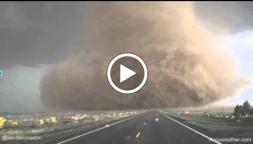Humidity and Dew Point
Daily Dose of Destruction
In this chapter, you will discover how weather patterns and clouds form and learn how to read weather maps and symbols. Hopefully, you will become an amateur meteorologist, a scientist who studies, analyzes, and predicts the weather. Weather is defined as the present state of the atmosphere and its current conditions. Factors that determine the weather type are the atmospheric pressure, wind, temperature, and moisture in the air. The water cycle forms the basis of our weather. Weather is driven by the interactions between air, water, and the sun.
As air temperature increases it can hold more water vapor because it is voluminous. Humidity is the amount of water vapor that the air contains. The amount of humidity changes daily because air brings in moisture as well as blows it out. As the air cools down condensation of water vapor occurs.
Relative humidity us the measurement of how much water air is holding compared to how much it can hold at specific temperatures. When air can't hold any more water we call the air saturated, meaning that it contains 100% humidity. The temperature at which saturated air condensates is called the dew point. Dew point is reached because as the air cools, its volume shrinks until it cannot hold any more water vapor. If you have ever seen frost or dew on the ground you can tell that the dew point has been reached. As of this writing the dew point in Snowflake AZ is 28 degrees F, which means that in order for condensation and dew to occur, the temperature has to drop to 28 degrees F.
This next lab will walk you through an understanding of relative humidity and dew point.
SUSD5 Student Version of the Relative Humidity and Dew Point Lab
Purchase the Relative Humidity and Dew Point Lab for $1.25 at Teachers Pay Teachers.










